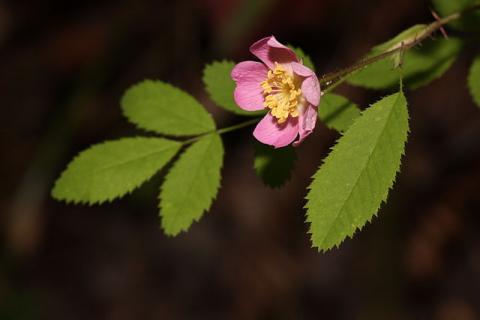
Image Credit: The Wild Garden
We have two species of native rose in the pacific northwest.
Rosa Gymnocarpa has soft, straight prickles on the stem, and compound leaves having toothed leaflets 1-4 cm long.
Ecology: Despite the prickly stems of the Rosa gymnocarpa is a browsing source of deer and elk especially after a habitat disturbance as it is one of the first plants to recover. Birds enjoy the hips (fruiting body) of this rose. Thrushes, quail, juncos, towhees, Stellar’s blue jays, and grosbeaks eat the hips which provide food through the winter. The seeds from the hips also provide grit for birds. Hummingbirds get nectar form the flowers as do bees.
Rosa Nutkana has prickles at the base of each leaf, without other prickles, and compound toothed leaves with leaflets 1-7 cm long.
Ecology: The foliage of this native rose is covered with fine prickly hairs that are irritating when eaten. Thus the plant is us used mostly as a shelter and refuge for small mammals and birds. The foliage however does provide food for the larvae of the morning cloak butterflies, and grey hairstreak butterflies. Aphids, an important food source for ladybugs, other insect predators, and certain songbirds, are also common to the plant.
